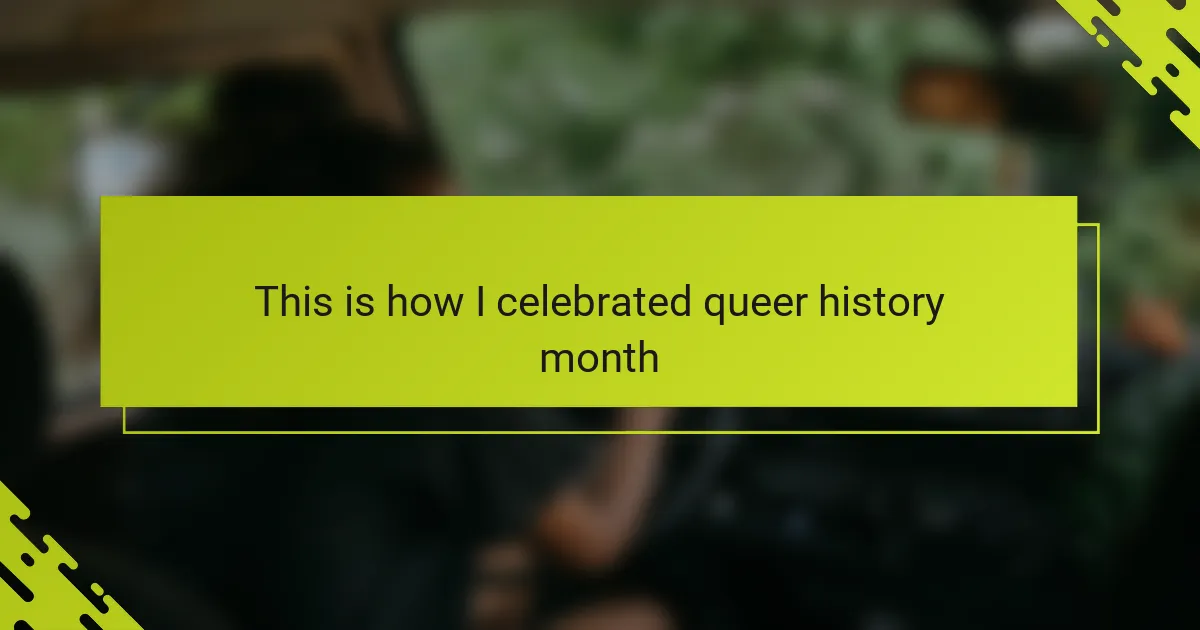Key takeaways
- Queer women culture is characterized by shared experiences, resilience, and continuous evolution, fostering connections through art and storytelling.
- Celebrations during Queer History Month include recognizing trailblazing figures, engaging in community art, and creating joyful gatherings that reaffirm identity and belonging.
- Symbols and icons, such as the rainbow flag and influential figures like Audre Lorde, serve as powerful reminders of history and community strength.
- Creating inclusive spaces and participating meaningfully involves vulnerability, active listening, and recognizing diverse identities within the community.
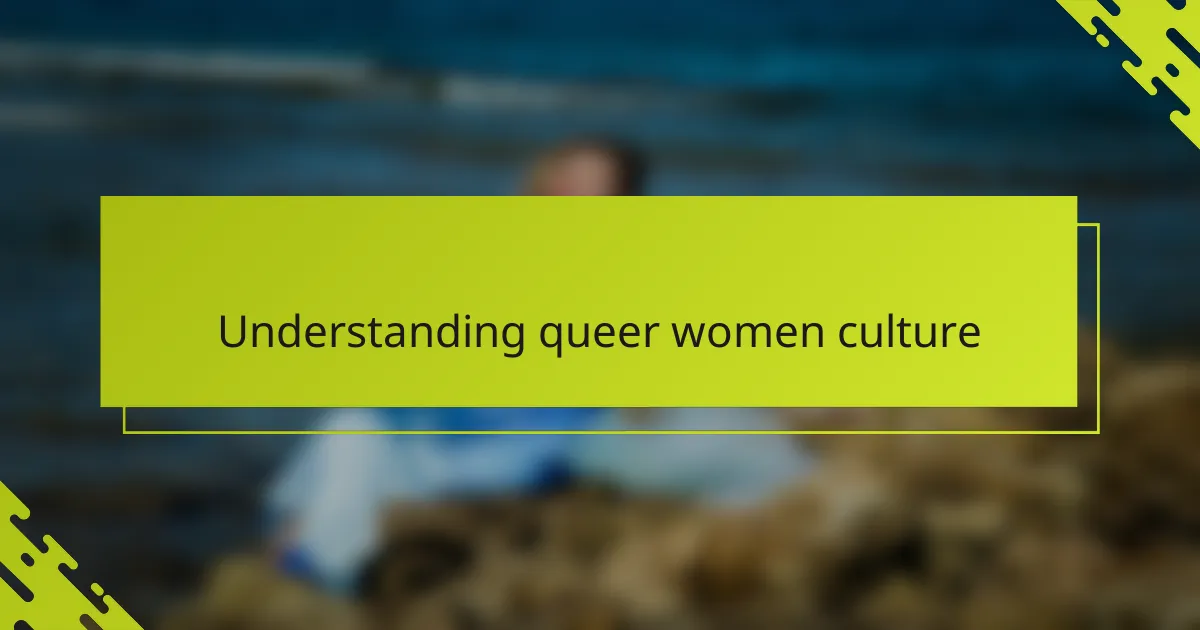
Understanding Queer Women Culture
Queer women culture is rich and multifaceted, shaped by shared experiences and diverse identities. I’ve often found that it goes beyond labels—it’s about the connections, the art, and the subtle ways we express ourselves in spaces that truly feel like home. Have you ever noticed how just a look or a phrase can instantly create a sense of belonging among queer women?
For me, understanding this culture means embracing its fluidity. It’s not just about visibility but also about the quiet resilience and creativity that flourish even when society overlooks us. Sometimes, the most powerful moments are those small, intimate gatherings where stories unfold and identities are celebrated without judgment.
What fascinates me most is how queer women culture continuously evolves, refusing to be boxed in by stereotypes or expectations. It’s a living tapestry woven from courage, love, and a shared history that still inspires me every day. How do you see this culture reflected in your own journey?
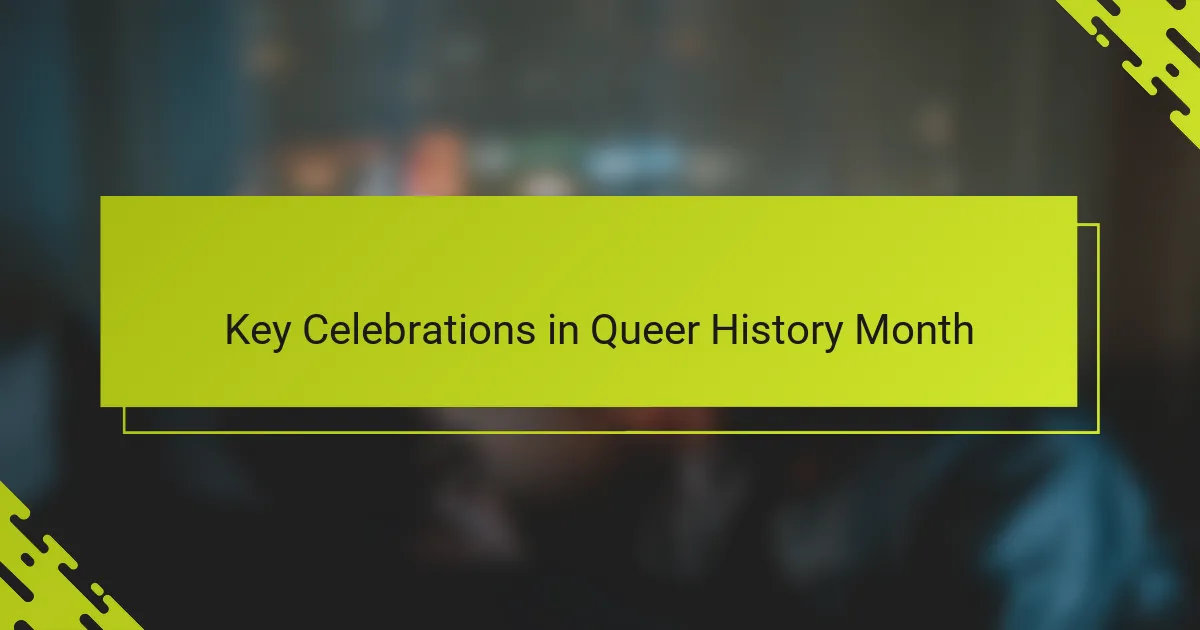
Key Celebrations in Queer History Month
One of the key celebrations during Queer History Month that truly resonated with me is the honoring of trailblazing queer women whose stories often go untold. I remember attending a virtual panel where activists and artists shared their journeys, and it struck me how these narratives filled gaps in my own understanding. Don’t you think recognizing these pioneers helps us connect more deeply with our roots and feel a part of something bigger?
Another celebration that stands out is the vibrant art exhibits and film screenings dedicated to queer women’s experiences. I’ve felt a profound sense of connection sitting among others who see their lives reflected on screen or canvas, reminding me how art becomes a powerful act of visibility and resistance. Isn’t it amazing how creative expressions invite us into conversations that words sometimes can’t capture?
Finally, community gatherings—whether small brunches or larger festivals—create spaces where joy, memory, and activism intertwine. I’ve learned that these moments of collective celebration are more than just fun; they recharge our spirit and reaffirm our presence in a world that so often tries to erase us. Have you found that sharing these experiences with others deepens your sense of belonging?
![]()
Important Symbols and Icons
Symbols like the rainbow flag and the labrys have always held a special place in my heart during Queer History Month. I remember the first time I saw the labrys—the double-headed axe—used as a symbol of strength and lesbian identity, and it gave me a new language to celebrate my own history. Have you ever felt that a symbol can suddenly make your experience feel seen and honored?
Icons such as Audre Lorde and Marsha P. Johnson often come up in conversations and events, serving as beacons of courage and resilience. Their stories remind me that behind every symbol is a life full of struggle and triumph, making those emblems much more than just images. Isn’t it powerful to think about the legacy carried by these icons and how they inspire us to keep forging our own paths?
Each symbol and icon carries layers of meaning that speak to our collective journey. I’ve noticed how wearing or displaying these emblems during celebrations creates an unspoken bond, almost like a secret handshake among queer women. What symbols resonate most with you, and how have they shaped your sense of identity?
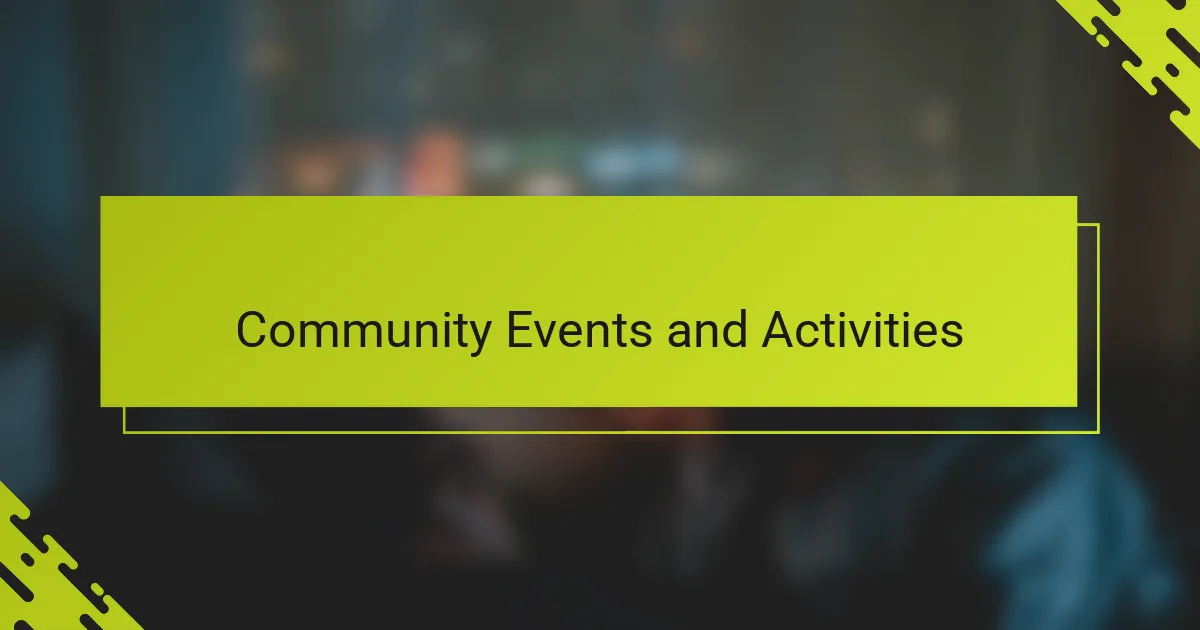
Community Events and Activities
Community events during Queer History Month have been some of my most cherished experiences. Last year, I joined a local storytelling night where queer women shared personal tales of resilience and love. Listening to those voices in a space filled with warmth and understanding made me feel deeply seen—have you ever walked into a room and just instantly known you belonged?
I also participated in a collaborative art workshop that brought together queer women from various backgrounds to create a mural celebrating our diverse identities. The energy was contagious, and witnessing how individual expressions blended into a powerful collective statement reminded me how creativity can unite us beyond words. Isn’t it amazing how art can become both a refuge and a rallying cry?
Smaller gatherings, like potlucks and discussion circles, often hold a quiet magic for me. They invite vulnerability and foster connections that extend far beyond the event itself. I find that these intimate moments of sharing and listening not only build community but also nourish my soul—what kinds of gatherings have made you feel most connected?
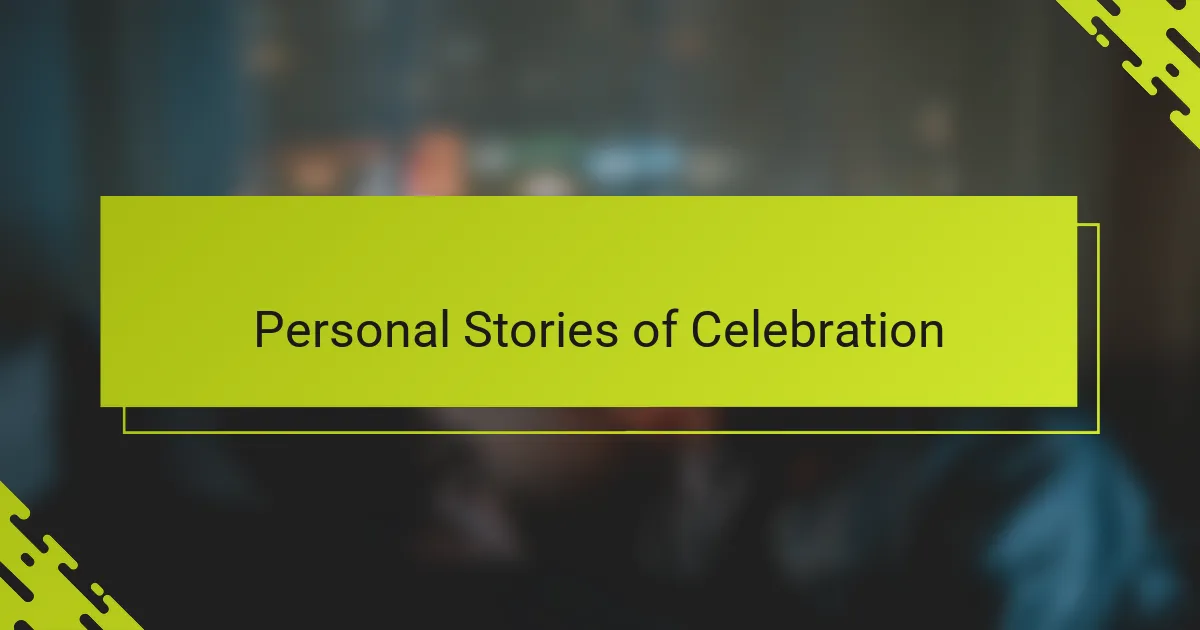
Personal Stories of Celebration
One of my most memorable celebrations during Queer History Month was hosting a dinner with close friends where each of us shared stories about queer women who had inspired us personally. Those moments of vulnerability, laughter, and tears made the history feel alive and deeply personal—have you ever experienced a gathering where history and friendship intertwined so naturally?
I also took the time to document my own journey through photos and journal entries, reflecting on how queer women culture has shaped my identity. Re-reading those reflections brought a mix of nostalgia and pride, reminding me that our stories are ongoing chapters in a much larger narrative. How does revisiting your personal history during these celebrations shape your sense of self?
Sometimes, celebration comes in quieter forms. I spent an afternoon immersed in queer literature and poetry that moved me profoundly, feeling connected across time and space to voices that resonate with my own. That solitary celebration felt just as powerful as any public event—do you find that personal rituals can be as meaningful as community gatherings?
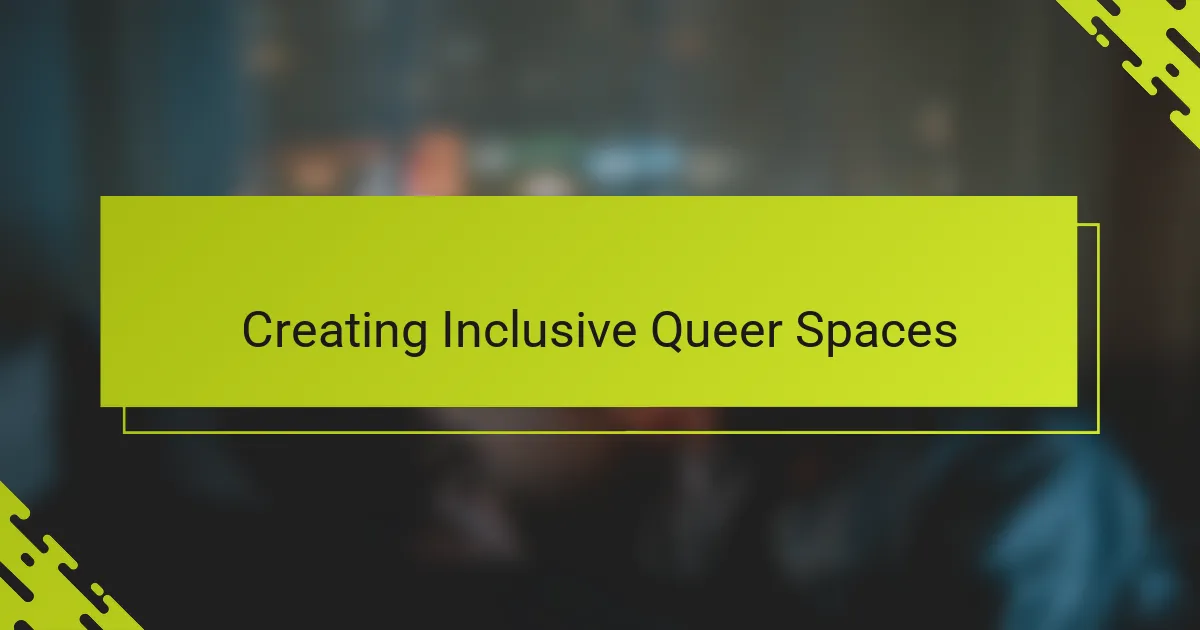
Creating Inclusive Queer Spaces
Creating inclusive queer spaces has always felt essential to me, especially during Queer History Month. I remember organizing a small meetup where everyone was encouraged to express themselves without fear of judgment, and the atmosphere of acceptance was palpable. Have you noticed how a space where people feel safe can transform simple conversations into moments of real connection?
What I find most important is the intentional effort to include diverse identities within queer women culture. It’s not just about inviting people, but creating environments where each voice, especially those often marginalized, is genuinely heard and valued. How different do you think our community feels when inclusion is truly practiced rather than just spoken about?
Sometimes, it’s the little things that make these spaces inclusive—a pronoun check-in, accessible venues, or openly discussing mental health without stigma. These small but thoughtful actions build trust and signal that everyone belongs. Have you experienced moments in community spaces that made you feel unexpectedly supported or seen?
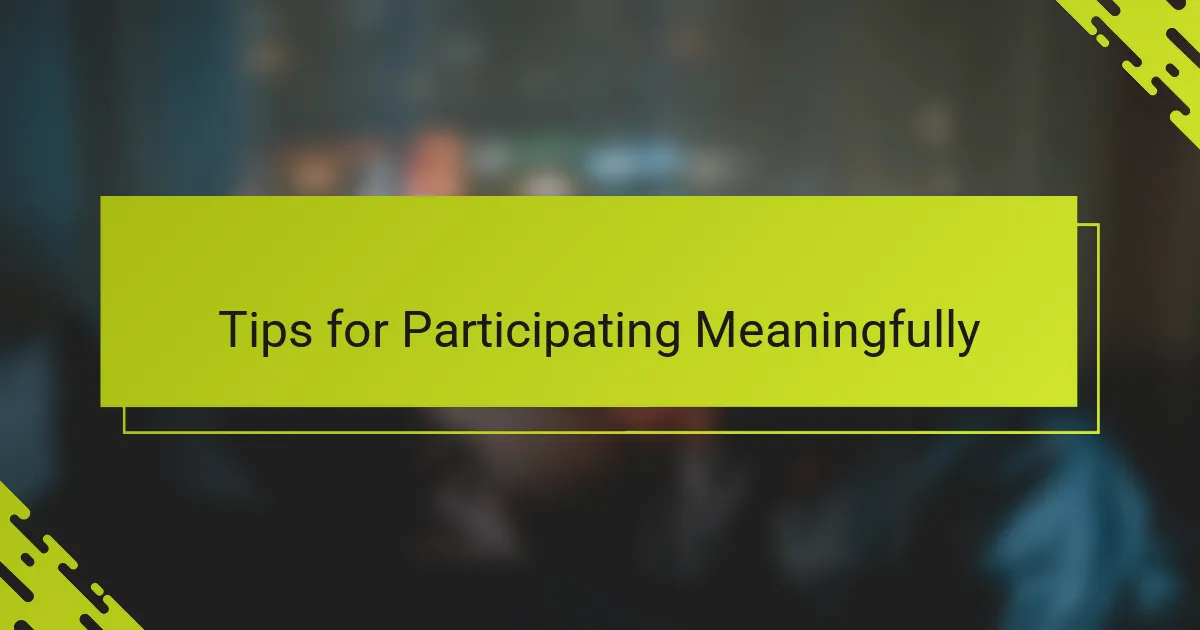
Tips for Participating Meaningfully
Meaningful participation during Queer History Month, in my experience, starts with showing up as your authentic self. I recall attending a workshop where simply sharing my story opened unexpected doors to connection—I wonder, have you found that vulnerability often invites the deepest dialogue?
It’s also helped me to listen actively and learn from others, recognizing that every voice adds a unique thread to the tapestry of queer women’s histories. When was the last time you paused to truly absorb someone else’s perspective and felt your own understanding expand?
Finally, I’ve learned that meaningful participation isn’t always about big events; sometimes it’s the small, intentional acts—like amplifying a lesser-known artist online or gifting a book by a queer author—that ripple outward. What simple action could you take today that quietly honors this vibrant culture?
